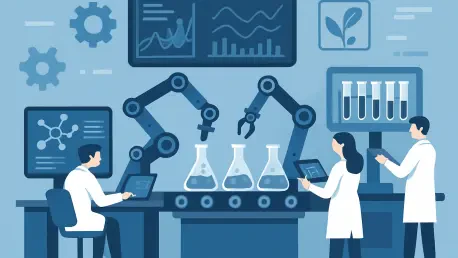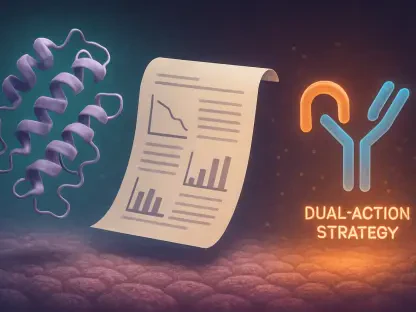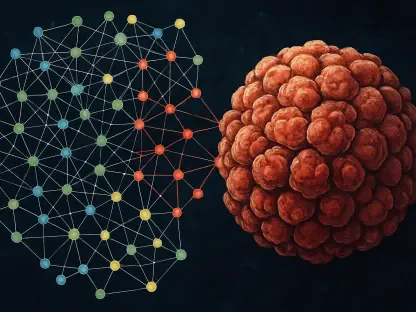In the dynamic realm of scientific research, laboratories face an urgent need to adapt to a rapidly digitizing world where efficiency and precision are paramount, and a staggering amount of time is lost to navigating disconnected systems. Manually transferring data and wrestling with outdated technology detract from the core mission of discovery. Enter the concept of a Digital Laboratory Operating System (Digital Lab OS), a transformative framework poised to unify fragmented lab operations into a cohesive, automated ecosystem. Much like a computer operating system simplifies interactions between hardware and software, this innovative approach aims to streamline workflows, allowing scientists to prioritize groundbreaking research over logistical hurdles. This exploration delves into the current challenges of lab automation, the promise of a unified digital solution, and the tangible steps already being taken to reshape the future of analytical laboratories.
The Current State of Lab Automation
Navigating a Fragmented Landscape
The reality of modern laboratories is often a patchwork of incompatible systems that hinder productivity at every turn. Instrument data frequently lacks standardization, with even devices from the same manufacturer producing outputs in varying formats that refuse to align. Legacy systems, built on obsolete technology stacks, compound the problem by failing to integrate with contemporary tools, creating isolated data silos. Scientists are left to manually bridge these gaps, spending countless hours piecing together information from electronic lab notebooks (ELNs), laboratory information management systems (LIMS), and robotics platforms. This fragmentation not only slows down research but also increases the likelihood of errors, as manual data transfers are prone to human oversight. The need for a unifying solution has never been more apparent, as labs struggle to maintain efficiency in an increasingly complex digital environment.
Beyond the technical barriers, the reliance on manual processes further deepens inefficiencies in lab operations. Tasks such as depositing data into shared folders or maintaining outdated applications consume valuable time that could be spent on experimentation and analysis. These fragile, customized workflows often depend on specific individuals for support, creating bottlenecks when expertise is unavailable. The result is a lab environment where progress is stymied by logistics rather than advanced by innovation. A Digital Lab OS offers a potential remedy by automating these back-end processes, ensuring seamless data flow and reducing the burden on researchers. Such a system could transform the way labs operate, slashing delays and fostering a more agile approach to scientific inquiry that prioritizes results over routine tasks.
Cultural Barriers to Digital Progress
Resistance to change remains a significant obstacle in the journey toward lab automation, often rooted in human rather than technical factors. Many senior leaders and seasoned researchers exhibit hesitation when it comes to adopting new digital tools, preferring familiar methods over untested systems. Concerns about data security and the potential loss of control over proprietary information frequently fuel this reluctance, entrenching outdated practices. This cultural inertia perpetuates inefficiencies, as data silos remain intact and collaborative opportunities are missed. Overcoming these barriers requires not only technological solutions but also a shift in mindset, where trust in digital systems is built through education and demonstrated reliability. Addressing these human elements is as crucial as solving compatibility issues if labs are to fully embrace the benefits of automation.
Additionally, the lack of familiarity with advanced digital platforms can exacerbate resistance among lab personnel. Many researchers, trained in traditional methods, may find the learning curve of new systems daunting, leading to a preference for manual processes despite their drawbacks. This gap in digital literacy often results in underutilization of existing tools, further slowing the pace of transformation. Initiatives to bridge this divide, such as targeted training programs and user-friendly interfaces, are essential to easing the transition. By fostering an environment where digital adoption is seen as an enhancement rather than a burden, labs can begin to dismantle the cultural walls that stand in the way of progress. The path forward lies in balancing technological innovation with efforts to align stakeholders around a shared vision of a more efficient, connected lab ecosystem.
The Promise of Digital Lab OS
Transforming Workflows Through Integration
The vision of a Digital Lab OS hinges on its ability to act as a central orchestrator, integrating disparate systems into a unified workflow that eliminates manual intervention. Real-world implementations, such as the Thermo Fisher™ Connect Enterprise Platform, illustrate this potential by linking third-party systems and harmonizing data formats across platforms. Using tools like Thermo Scientific™ Momentum™ Workflow Scheduling Software, this platform coordinates automated work cells, ensuring that data flows seamlessly regardless of its source. Scientists no longer need to toggle between multiple applications or worry about compatibility issues; instead, they can trust the system to handle these complexities behind the scenes. This shift marks a significant departure from the status quo, redirecting focus from managing tools to driving meaningful scientific outcomes with greater speed and accuracy.
Moreover, the automation enabled by a Digital Lab OS brings unparalleled benefits in terms of repeatability and compliance, critical factors in high-stakes research environments. By systematically logging environmental conditions, experimental steps, and data outputs, such a system ensures traceability for future audits, reducing the risk of regulatory setbacks. This level of precision also minimizes human error, as tasks like data entry or system integration are handled by the platform rather than individuals. The result is a lab where efficiency is not just an aspiration but a daily reality, freeing up researchers to tackle complex scientific questions without the distraction of logistical challenges. As more labs witness these tangible improvements, the case for adopting a unified digital framework becomes increasingly compelling, setting a new standard for operational excellence.
Envisioning the Lab of the Future
Looking ahead, the broader implications of a Digital Lab OS extend far beyond individual facilities, promising to reshape the entire scientific community through standardized workflows. Enhanced data accessibility fosters collaboration, allowing labs to share insights and resources without the friction of incompatible systems. In fields like pharmaceuticals, where speed and repeatability are paramount, this could accelerate drug development by streamlining data analysis and experiment validation. The potential for cross-institutional partnerships grows as barriers to information exchange diminish, paving the way for collective advancements in critical research areas. A Digital Lab OS thus serves as a catalyst for innovation, transforming isolated efforts into a networked ecosystem of shared progress.
Furthermore, the emphasis on compliance and traceability inherent in a Digital Lab OS addresses longstanding challenges in meeting regulatory demands. Automated logging and data integration reduce the effort required to prepare for audits, minimizing the risk of costly delays or penalties. As more labs adopt platforms that embody this vision, the concept is poised to become an industry benchmark, fundamentally altering how science is conducted. From enhancing research speed to ensuring adherence to standards, the impact of this technology signals the dawn of a new era in lab operations. The journey toward the lab of the future has already begun, with each step forward demonstrating the power of digital transformation to unlock the full potential of laboratory resources.









